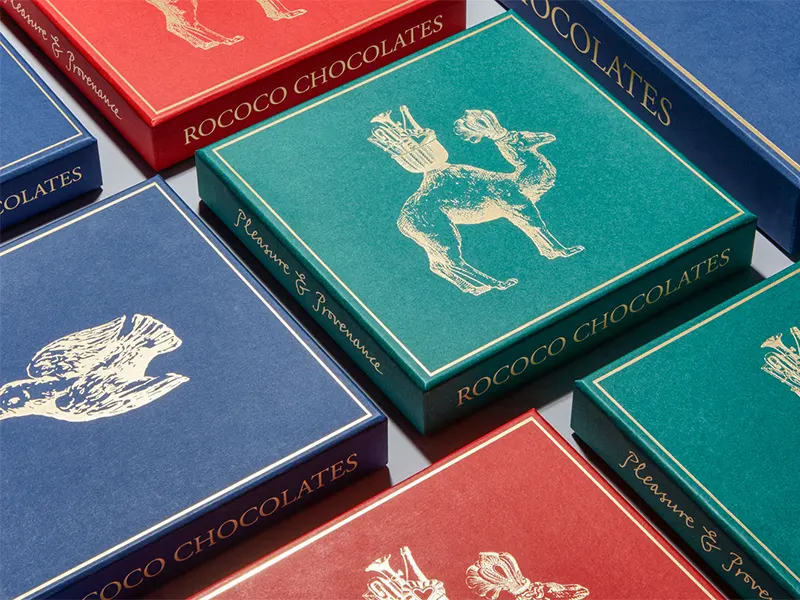In an increasingly competitive marketplace, the presentation of your product can make all the difference. Custom foiling boxes offer a unique way to enhance your packaging, adding a touch of elegance and sophistication that can captivate consumers. This guide will explore the benefits, types, design options, and best practices for using custom foiling in your packaging strategy.
What Are Custom Foiling Boxes?
Custom foiling boxes are packaging solutions that feature a metallic or glossy finish achieved through a foiling process. This technique involves applying a thin layer of metallic foil to the box’s surface, creating eye-catching designs and enhancing the overall aesthetic appeal. Foiling can be applied to various packaging materials, including cardboard, paper, and more.
Key Features of Custom Foiling Boxes
- Visual Appeal: The shiny, reflective quality of foiling immediately draws attention, making your product stand out on the shelf.
- Brand Recognition: Custom foiling can showcase your brand logo and messaging, reinforcing brand identity.
- Variety of Foil Options: Available in various colors and finishes, from gold and silver to holographic and matte, allowing for endless design possibilities.
Benefits of Custom Foiling Boxes
1. Enhanced Aesthetic Appeal
The primary advantage of custom foiling boxes is their ability to enhance the visual appeal of your packaging. The metallic finish creates a luxurious look that can elevate even simple designs, making them more attractive to potential buyers.
2. Increased Brand Recognition
By incorporating foiling into your packaging design, you can create a memorable brand identity. Well-placed foil accents can make your logo and product name pop, increasing recognition and recall among consumers.
3. Improved Perceived Value
High-quality packaging can significantly influence consumer perception. Custom foiling gives the impression of premium quality, which can justify higher price points and enhance customer satisfaction.
4. Versatility in Design
Custom foiling can be applied to various packaging types, including boxes, labels, and inserts. This versatility allows brands to maintain a consistent look across multiple product lines, reinforcing brand identity.
5. Unique Marketing Opportunities
Foiling can be used strategically to highlight specific features or promotions. For instance, using a different foil color to draw attention to a limited-time offer can create urgency and boost sales.
Types of Custom Foiling
1. Hot Foil Stamping
This technique involves using heat and pressure to transfer foil onto the packaging surface. It is ideal for adding intricate designs or text and is commonly used for logos and branding elements.
2. Cold Foiling
Cold foiling uses adhesives to apply foil at room temperature, allowing for more complex designs and quicker production times. This method is often used for full-color images and patterns.
3. Holographic Foiling
This type of foiling creates a rainbow effect that shifts with light, adding a dynamic and eye-catching quality to packaging. Holographic foiling is particularly effective for attracting attention in retail environments.
Designing Custom Foiling Boxes
1. Focus on Your Brand Identity
Your packaging should reflect your brand’s personality and values. Consider how foiling can complement your existing branding elements, such as colors and logos.
2. Choose the Right Foil Color
Selecting the appropriate foil color is crucial. Gold and silver foils are classic choices that convey luxury, while bold colors can create a more modern and energetic vibe. Consider your target audience and product category when making this decision.
3. Balance Design Elements
While foiling can enhance the design, it’s essential to maintain a balance between visual appeal and functionality. Ensure that the foil accents do not overwhelm the overall design; instead, they should complement it.
4. Test Different Techniques
Experiment with various foiling techniques to determine which best suits your design needs. Hot foil stamping may work better for intricate logos, while cold foiling might be more effective for full-color images.
Best Practices for Custom Foiling Boxes
1. Work with a Professional Printer
Partner with an experienced printing company that specializes in custom foiling. They can guide you through the design process, recommend techniques, and ensure high-quality results.
2. Consider Production Costs
While custom foiling can elevate your packaging, it’s essential to consider the production costs. Ensure that the added value justifies the investment, especially if you are producing in large quantities.
3. Prototype Your Design
Before finalizing your order, create prototypes to see how the foiling looks on your packaging. This step allows you to make adjustments to the design and ensure everything meets your expectations.
4. Gather Feedback
Seek feedback from potential customers or focus groups on your packaging design. Their insights can help you refine your approach and create packaging that resonates with your target audience.
Conclusion
Custom foiling boxes offer an exceptional way to enhance your product packaging, making it visually appealing and memorable. By understanding the benefits, types, and best practices associated with custom foiling, you can create packaging that not only protects your products but also elevates your brand presence.
Investing in yourboxpackaging.com is a strategic decision that can set your products apart in a crowded market. Embrace the power of foiling to create packaging that captivates, informs, and delights your customers.







